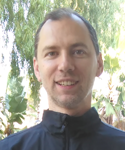
Head of neuronal data analytics lab
e-mail: Luczak@uleth.ca , phone: (403) 394-3974, office: SA8240, Lab: SA8118
Research Interests
Our lab is using electrophysiological and machine learning methods to study information processing in the brain. One of our main contributions is a development of ‘neuronal packet’ concept, which describes basic building blocks of neuronal code (Nature Rev Neurosci 2015, Neuron 2013, J Neurosci 2013, Neuron 2009, PNAS 2007). Moreover, we derived a predictive learning algorithm from basic cellular principles, i.e. from maximizing metabolic energy of a neuron, which may offer a step toward a general theory of neuronal learning (Nature Machine Intelligence 2022). We are also studying changes in neuronal activity caused by neurological disorders, especially epilepsy (Brain 2017). To facilitate it, our lab developed Deep Neural Networks for detecting neurological deficits (PLOS Biology 2019).
My talk about our research on Brain Learning Mechanisms and Consciousness given at the Royal Society of Canada meeting in 2022.
Research highlights from our lab

Single neuron predictive learning.
Neurons have biochemical mechanisms capable of performing complex computations. Thus, the simple models of neurons used in machine learning may be missing the essential computational elements of the brain. We showed that to maximize metabolic energy, individual neurons need to predict their own expected future activity. This results in a new learning algorithm which could be a crucial component of the brain’s learning mechanism. Nature Machine Intelligence paper
Here is my talk about our epilepsy research and at 17:40 I also describe single neuron predictive learning.
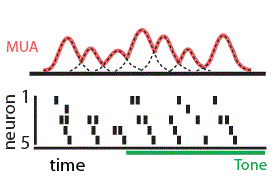
Neuronal packet theory. We described that in the sensory cortex, information is not processed continuously, but rather is divided in 50~500ms long “packets”, which have specific sequential structure of neuronal activity. Each packet can be conceived of as a discrete ‘message’, with neurons active at the beginning of a packet providing general information (e.g. it is a face), while neurons active in the latter phase encode more precise information (e.g. this is face of my friend John). This packet-like organization of neuronal activity may provide an explanation for multiple puzzling observations about neuronal coding. Nature Rev Neurosci paper.
Short video about our research on neuronal packets, and here is more in depth talk about packets (+ slides)
Job opportunities for PhD student or Postdoc
Our lab seeks highly motivated individuals with strong computational backgrounds to work at the interface of neuroscience and machine learning. We are especially interested in application of deep neural networks to improve our understanding of neuronal data, and application of recent neuroscience findings to improve performance of deep neural networks. In our lab we are also recording activity of hundreds of neurons in normal and epileptic animals, and successful candidate is welcome to participate in those projects. Preferred candidate should have strong background in modeling neurons and networks, and should be very familiar with models of synaptic plasticity (e.g. BCM). Our lab at the Canadian Centre for Behavioural Neuroscience in Lethbridge is located in the sunniest area of Canada and next to scenic Rocky Mountains.
Undergraduate students interested in any of the above topics may also apply for Independent study in my lab.
Teaching
- Introductory workshop on computational methods in neuroscience
- Statistics and Programming in Matlab (NEUR 3850A)
- Brain and Behavior (NEUR 2600B)
- Past courses:
- Applied Statistics for Neuroscience Research (NEUR 3850B)
- Introduction to Programming for Neurobiologists (Matlab) (NEUR 3850A)
- Stress and Brain Function (NEUR 4850 – together with Dr. GA Metz)
- Computational Neuroscience
Short bio
- 2018 prof. – CCBN, University of Lethbridge
- 2016/17 visiting assoc. prof. – Stanford University (I. Soltesz lab)
- 2014 assoc. prof. – CCBN, University of Lethbridge
- 2009 assistant prof. – CCBN, University of Lethbridge
- 2004 postdoc – Rutgers University (K.D. Harris lab)
- 2002 postdoc – Yale University (R. Coifman lab in Comp. Sci. Dept. and M. Laubach lab in Neurosci. Dept.)
- 2002 Ph.D. – Jagiellonian University, Medical College, Poland. (thesis: The application of fractal geometry in neuroanatomy; J. Trabka lab)
- 2001/02 Marie Curie Fellowship – International School for Advanced Studies , Italy (A. Treves lab)
- 1997 M.Sc in Biomedical Engineering – Wroclaw University of Technology.
Publications (Google Scholar profile)
-
-
- Barbosa D, Gattas S, Salgado J, Kuijper F, Wang A, Huang Y, Kakusa B, Leuze C, Luczak A, Rapp P, Malenka R, Miller K, Heifets B, Bohon C, McNab J, Halpern C. An orexigenic subnetwork within the human hippocampus. Nature (2023) paper.
Press coverage: Newswise, EurekAalert!, ScienceNewsNet.
- Chalmers E, Luczak A. Reinforcement Learning with Brain-Inspired Modulation can Improve Adaptation to Environmental Changes. Lecture Notes in Computer Science (2023) paper.
- Yang H, Shew W, Yu S, Luczak A, Stringer C, Okun M. Editorial: Deciphering population neuronal dynamics: from theories to experiments. Front. Syst. Neurosci (2023). Paper
- Chalmers E, Gruber A, Luczak A. Hippocluster: an efficient, hippocampus-inspired algorithm for graph clustering. Information Sciences (2023). Paper
- Kubo Y, Chalmers E, Luczak A. Biologically-inspired neuronal adaptation improves learning in neural networks. Communicative & Integrative Biology (2023). Paper , Code.
- Luczak A, McNaughton BL, Kubo Y. Neurons learn by predicting future activity. Nature Machine Intelligence (2022) Paper, Suppl., Code.

This paper was chosen for January 2022 cover story in Nature Mach. Intell., it was included in Nature special collection: A revolution in robotics and artificial intelligence, it was selected by PNAS for journal club , it was made a feature story in TechXplore, and it is in the top 5% of papers tracked by Altmetric.
- Luczak A, Kubo Y. Predictive neuronal adaptation as a basis for consciousness. Frontiers in Systems Neurosci. (2022) Paper, Suppl.

- Kubo Y, Chalmers E, Luczak A. Combining backpropagation with Equilibrium Propagation to improve an Actor-Critic Reinforcement Learning framework. Frontiers in Computational Neuroscience (2022) Paper
- Das R, Luczak A. Epileptic seizures and link to memory processes. AIMS Neuroscience (2022) Paper
- Bermudez Contreras E, Palacio-Schjetnan AG, Luczak A, Mohajerani MH. Sensory experience selectively reorganizes the late component of evoked responses. Cerebral Cortex (2022) Paper
- Afrashteh N, Inayat S, Bermudez-Contreras E, Luczak A, McNaughton BL, Mohajerani MH. Spatiotemporal structure of sensory-evoked and spontaneous activity revealed by mesoscale imaging in anesthetized and awake mice. Cell Reports (2021) Paper
- Abadchi JK, Nazari-Ahangarkolaee M, Gattas S, Bermudez-Contreras E, Luczak A, McNaughton BL, Mohajerani MH. Spatiotemporal patterns of neocortical activity around hippocampal sharp-wave ripples. eLife (2020). Paper
- Cooke S et al. Diverse Perspectives on Interdisciplinarity from the Members of the College of The Royal Society of Canada. FACETS (2020) Paper
- Ryait H, Bermudez-Contreras E, Harvey M, Faraji J, Mirza Agha B, Gomez-Palacio Schjetnan A, Gruber A, Doan J, Mohajerani M, Metz G.A.S, Whishaw IQ, Luczak A. Data-driven analyses of motor impairments in animal models of neurological disorders. PLOS Biology (2019) Paper, Code. Media coverage: Science Daily, Yahoo News, Phys.org, @VentureHealth, MedicineHatNews, UNews, Herald.

- Molina L, Ivan V, Gruber A, Luczak A. Using neuron spiking activity to trigger closed-loop stimuli in neurophysiological experiments. JoVE (2019) Paper, Code, Video.
- Gomez-Palacio Schjetnan A, Gidyk D, Metz G.A.S, Luczak A. Direct Current Stimulation Improves Limb Use After Stroke by Enhancing Inter-hemispheric Coherence. Acta Neurobiologiae Experimentalis (2019) Paper
- Luczak A. Effect of body position on relieve of foreign body from the airway. AIMS Public Health (2019) Paper
- Jalali A, Tata MS, Gruber A, Luczak A. Phase of EEG theta oscillation during stimulus encoding affects accuracy of memory recall. NeuroReport (2019) Paper
- Turchenko V, Chalmers E, Luczak A. Deep Convolutional Auto-Encoder with Pooling – Unpooling Layers in Caffe. International Journal of Computing (2019) Paper, Code.
- Chalmers E, Bermudez Contreras E, Robertson B, Luczak A, Gruber A. Learning to Predict Consequences as a Method of Knowledge Transfer in Reinforcement Learning. IEEE Transactions on Neural Networks and Learning Systems (2018). Paper.
- Neumann AR, Raedt R, Steenland HW, Sprengers M, Bzymek K, Navratilova Z, Mesina L, Xie J, Lapointe V, Kloosterman F, Vonck K, Boon PAJM, Soltesz I, McNaughton BL, Luczak A. Involvement of fast-spiking cells in ictal sequences during spontaneous seizures in rats with chronic temporal lobe epilepsy. Brain (2017). Paper; Suppl. This paper was selected for commentary in Brain, commentary in Epilepsy Currents, and it was chosen for F1000 recommendation. Media coverage: U of L, MetroNews, Herald.

- Jercog D, Roxin A, Bartho P, Luczak A, Compte A, de la Rocha J. UP-DOWN cortical dynamics reflect state transitions in a bistable balanced network. eLife (2017). Paper
- Gerrard B, Singh V, Babenko O, Gauthier I, Yong WV, Kovalchuk I, Luczak A, Metz GAS. Chronic Mild Stress Exacerbates Severity of Experimental Autoimmune Encephalomyelitis in Association with Non-coding RNA and Metabolic Biomarkers. Neuroscience (2017). Paper.
- Turchenko V, Luczak A. Creation of a Deep Convolutional Auto-Encoder in Caffe. The 9th IEEE International Conference on Intelligent Data Acquisition and Advanced Computing Systems (IDAACS) (2017) Paper, Code.
- Luczak A. Head-down self-treatment of choking. Resuscitation (2016) Paper.
Press coverage: The Huffington Post , Popular Science , AOL, 98.5 KTK , NewsCaf , The News Commenter , LifeHacker , OOYUZ , 24.hu , ChuanSong , Curioso , Slate.fr .

- Chalmers E, Luczak A, Gruber A. Computational Properties of the Hippocampus Increase the Efficiency of Goal-Directed Foraging through Hierarchical Reinforcement Learning. Front. Comput. Neurosci. (2016) Paper.
- Chalmers E, Bermudez Contreras E, Robertson B, Luczak A, Gruber A. Context-Switching and Adaptation: Brain-Inspired Mechanisms for Handling Environmental Changes (proceedings of the IEEE 2016 International Joint Conference on Neural Networks (IJCNN), Vancouver (2016) Paper.
- Luczak A, McNaughton BL, Harris KD. Packet-based communication in the cortex . Nature Rev Neurosci (2015) Paper; Talk; Slides. This paper has done particularly well and is in the in the top 5% of papers ever tracked by Altmetric.

- Bermudez Contreras E, Gomez Palacio Schjetnan A, Muhammad A, Bartho P, McNaughton BL, Kolb B, Gruber AJ, Luczak A. Formation and reverberation of sequential neural activity patterns evoked by sensory stimulation is enhanced during cortical desynchronization. Neuron (2013) Paper.

- Faraji J, Gomez-Palacio-Schjetnan A, Luczak A, Metz GA. Beyond the Silence: Bilateral Somatosensory Stimulation Enhances Skilled Movement Quality and Neural Density in Intact Behaving Rats. Behavioural Brain Research (2013) Paper.
- Luczak A, Bartho P, Harris KD. Gating of sensory input by spontaneous cortical activity. J.Neurosci. (2013). This paper was chosen for Research Highlights in Nature Reviews Neuroscience. Paper.

- Gomez Palacio Schjetnan A, Faraji J, Metz GA, Tatsuno M, Luczak A. Transcranial Direct Current Stimulation in Stroke Rehabilitation – A Review of Recent Advancements. Stroke Research and Treatment (2013) Paper.
- Luczak A, Bartho P. Consistent sequential activity across diverse forms of UP states under ketamine anesthesia. Eur. J. Neurosci. (2012) Paper.
- Dowdall JR, Luczak A, and Tata MS. Temporal variability of the N2pc during efficient and inefficient visual search. Neuropsychologia 50 (2012) Paper.
- Luczak A, MacLean JN. Default activity patterns at the neocortical microcircuit level. Front. Integr. Neurosci. 6:30 (2012) Paper.
- Ponjavic-Conte KD, Dowdall JR, Hambrook DA, Luczak A, Tata MS. Neural correlates of auditory distraction revealed in theta-band EEG. NeuroReport: 23 (2012) Paper.
- Gomez Palacio Schjetnan A, Luczak A. Recording Large-scale Neuronal Ensembles with Silicon Probes in the Anesthetized Rat. JoVE (2011). Paper, Video. This video is highly popular as evidenced by over 10,000 downloads.
- Luczak A. Measuring neuronal branching patterns using model-based approach. Front. Comput. Neurosci. 4:135 (2010). Paper, Code.
- Harris KD, Bartho P, Chadderton P, Curto C, de la Rocha J, Hollender L, Itskov V, Luczak A, Marguet SL, Renart A, Sakata S. How do neurons work together? Lessons from auditory cortex. Hearing Research, 1-17 (2010). Paper.
- Luczak A, Barthó P, Harris KD. Spontaneous events outline the realm of possible sensory responses in the auditory cortex. Neuron 62 (2009). This paper was highlighted as of special interest in review: Ringach DL, Curr Opin Neurobiol. 2009. Paper.
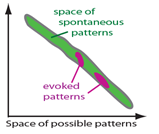
- Barthó P, Curto C, Luczak A, Marguet S, Harris KD. Population coding of tone stimuli in auditory cortex: dynamic rate vector analysis. Eur. J. Neurosc. 30 (2009). Paper.
- Luczak A, Barthó P, Marguet SL, Buzsáki G, Harris KD. Sequential structure of neocortical spontaneous activity in vivo. Proc. Natl. Acad. Sci. 104 (2007). Paper.

- Luczak A. Spatial embedding of neuronal trees modeled by diffusive growth. J. Neurosci. Methods 157 (2006). Paper, Code.
- Luczak A, Narayanan NS. Spectral representation – analyzing single-unit activity in extracellularly recorded neuronal data without spike sorting. J. Neurosci. Methods 144 (2005). Paper , Code.
- Luczak A, Hackett T, Kajikawa Y, Laubach M. Multivariate receptive field mapping in marmoset auditory cortex. J. Neurosci. Methods 136 (2004). Paper, Code.
- Luczak A, Hackett T, Kajikawa Y, Laubach M. “Modeling stimulus-response functions in the auditory system” Proceedings of the IEEE 29th Annual Northeast Bioengineering Conference, NJIT, Newark, NJ, 2003.
- Laubach M, Arieh Y, Luczak A, Oh J, Xu Y. “A cluster of workstations for on-line analyses of neurophysiological data” Proceedings of the IEEE 29th Annual Northeast Bioengineering Conference, NJIT, Newark, NJ, 2003.
- Oh J, Luczak A, Laubach M. “Estimating neuronal variable importance with Random Forest” Proceedings of the IEEE 29th Annual Northeast Bioengineering Conference, NJIT, Newark, NJ, 2003.
- Luczak A, Skrzat J, Trabka J. “Model of neuronal distribution during development in rat cortex based on cellular automata” Proceedings of V National Conference: Modelling of Biological Systems (MBS2000), Krakow, Poland, 2000.
- Skrzat J, Luczak A, Trabka J. “Fractal modelling of dendritic structures as a paradigm for morphogenetic structure of neurons” Proceedings of MBS2000, Krakow, Poland, 2000.
- Trabka J(jun.), Trąbka J, Luczak A. Simulation and modelling as the cognitive procedures. Proceedings of V National Conference: Modelling of Biological Systems (MBS2000), Krakow, Poland, 2000.
- Luczak A. “Modeling of growth and shape of neurons by the application of fractal geometry” Proceedings of the 1st European Interdisciplinary School on nonlinear Dynamics for System and Signal Analysis, EUROATTRACTOR 2000, Pabst Science Publishers, Warsaw, 2000.
- Luczak A, Skrzat J, Trabka J. “Parametric description of neuron shape on the basis of a generator of artificial neurons” Proceedings of XI National Meeting – Artificial Intelligence, Siedlce, Poland, 1999.
- Barbosa D, Gattas S, Salgado J, Kuijper F, Wang A, Huang Y, Kakusa B, Leuze C, Luczak A, Rapp P, Malenka R, Miller K, Heifets B, Bohon C, McNab J, Halpern C. An orexigenic subnetwork within the human hippocampus. Nature (2023) paper.
Book chapters
-
-
-
-
- Luczak A. Packets of sequential neural activity in sensory cortex; In “Analysis and modeling of coordinated multi-neuronal activity – Sequence phenomena and memory-trace replay”. Editor: Tatsuno M. Springer, Series in Computational Neuroscience. 2015 Chapter
- Luczak A. Shaping of neurons by environmental interaction; In “Dendritic computations through morphology and connectivity”. Editors: Torben-Nielsen B, Remme M, Cuntz H. Springer, Series in Computational Neuroscience. 2014 Chapter
-
-
-
Patent:
Brain state dependent therapy for improved neural training and rehabilitation (patent pending in USA and Canada). full text
Description: This invention provides means to assess how receptive to learning (plastic) the brain is at any given time. This invention has several commercial applications: (1) Rehabilitation centers could use devices based on this technology to measure brain responsiveness to therapy, which could improve rehabilitation after e.g. brain injury. (2) In addition, a consumer version for the general public could be used to focus learning/training to times of maximal brain receptivity, and as a biofeedback device for self-training to produce plastic brain states. Considering that this idea could result in significant health benefits, my colleagues and I started a company DeepBrain Analytics Inc., to facilitate bringing this invention to the market.Outreach activities:
I am past President of the Lethbridge Chapter of the Society for Neuroscience (SfN), where I was responsible for organizing multiple events to promote brain research, which engaged over 500 people annually. The main annual events included:
-
-
-
-
- I co-organize with M. Mohajerani Satellite Symposium at the Canadian Neuroscience Meeting: Neural Signal and Image Processing: Quantitative Analysis of Neural Activity; in Montreal (2017); with T. Murphy in Vancouver, (2018), and with S. Prescott in Toronto (2019). Each year we have ~50 participants from across Canada, and in 2019 we expanded format of this workshop to two days to accommodate student demand.
-
-
-
Funding:
-
-
 CIHR Project Grant (2019-2024)
CIHR Project Grant (2019-2024) CIHR Priority funding: Data science (2019-2021)
CIHR Priority funding: Data science (2019-2021)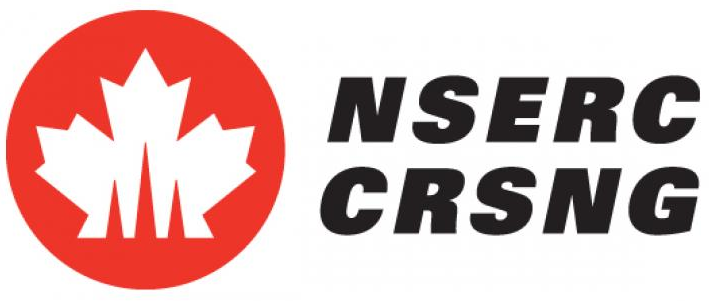 NSERC Discovery Grant (2010-2025)
NSERC Discovery Grant (2010-2025) NSERC DG Accelerator (2015-2018, awarded to the top ~4%)
NSERC DG Accelerator (2015-2018, awarded to the top ~4%)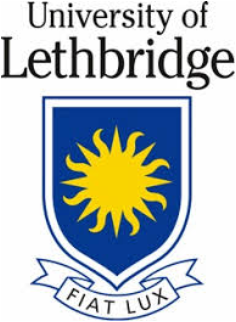 University of Lethbridge Research Fund (2018)
University of Lethbridge Research Fund (2018)
-
-